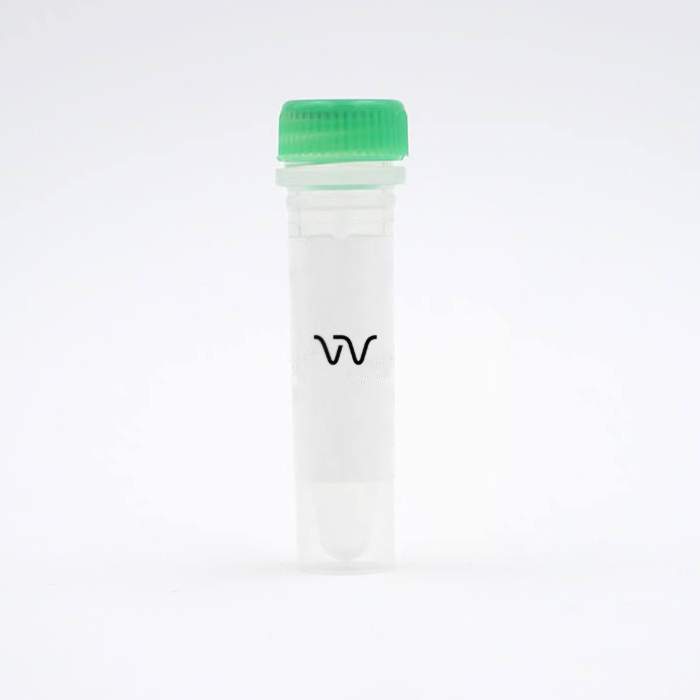

HTRF Human Phospho-Cyclin D1 (Thr286) Detection Kit, 10,000 Assay Points


HTRF Human Phospho-Cyclin D1 (Thr286) Detection Kit, 10,000 Assay Points






This lysate is a component of the Phospho-Cyclin D1 (Thr286) kit. It may be used as a residue-specific positive control for Cyclin D1 phosphorylation.
| Feature | Specification |
|---|---|
| Application | Cell Signaling |
| Sample Volume | 16 µL |
This lysate is a component of the Phospho-Cyclin D1 (Thr286) kit. It may be used as a residue-specific positive control for Cyclin D1 phosphorylation.



HTRF Human Phospho-Cyclin D1 (Thr286) Detection Kit, 10,000 Assay Points



HTRF Human Phospho-Cyclin D1 (Thr286) Detection Kit, 10,000 Assay Points



Product information
Overview
This HTRF cell-based assay conveniently and accurately detects phosphorylated Cyclin D1 at Thr286.
Cyclin D family members (including Cyclin D1, Cyclin D2, and Cyclin D3) are important regulators of cell cycle progression. They are integral mediators of growth factor-dependent G1 to S phase progression by playing the role of allosteric regulators of CDK4/6.
Cyclin D1 is upregulated in presence of extracellular mitogenic stimuli, and is then rapidly downregulated by proteasomal degradation following its phosphorylation on Thr286 by the kinase GSK-3β.
Cyclin D1 is an oncogene whose overexpression results in dysregulated CDK4/6 activity and leads to tumorigenesis. Cyclin D1 overexpression may be caused by gene amplification or chromosomal rearrangements, or as a result of impaired degradation of the protein. Mutations and deletions affecting its phosphorylation on Thr286 have been reported in several human cancers.
Specifications
| Application |
Cell Signaling
|
|---|---|
| Automation Compatible |
Yes
|
| Brand |
HTRF
|
| Detection Modality |
HTRF
|
| Lysis Buffer Compatibility |
Lysis Buffer 1
Lysis Buffer 4
|
| Molecular Modification |
Phosphorylation
|
| Product Group |
Kit
|
| Sample Volume |
16 µL
|
| Shipping Conditions |
Shipped in Dry Ice
|
| Target Class |
Phosphoproteins
|
| Target Species |
Human
|
| Technology |
TR-FRET
|
| Therapeutic Area |
Oncology & Inflammation
|
| Unit Size |
10,000 Assay Points
|
Video gallery

HTRF Human Phospho-Cyclin D1 (Thr286) Detection Kit, 10,000 Assay Points

HTRF Human Phospho-Cyclin D1 (Thr286) Detection Kit, 10,000 Assay Points

How it works
Phospho-Cyclin D1 (Thr286) assay principle
The Phospho-Cyclin D1 (Thr286) assay measures Cyclin D1 when phosphorylated at Thr286. Unlike Western Blot, the assay is entirely plate-based and does not require gels, electrophoresis, or transfer. The Phospho-Cyclin D1 (Thr286) assay uses 2 labeled antibodies: one with a donor fluorophore, the other with an acceptor. The first antibody was selected for its specific binding to the phosphorylated motif on the protein, the second for its ability to recognize the protein independently of its phosphorylation state. Protein phosphorylation enables an immune-complex formation involving both labeled antibodies, which brings the donor fluorophore into close proximity to the acceptor, thereby generating a FRET signal. Its intensity is directly proportional to the concentration of phosphorylated protein present in the sample, and provides a means of assessing the protein’s phosphorylation state under a no-wash assay format.

Phospho-Cyclin D1 (Thr286) two-plate assay protocol
The two-plate protocol involves culturing cells in a 96-well plate before lysis, then transferring lysates into a low volume detection plate before adding Phospho-Cyclin D1 (Thr286) HTRF detection reagents. This protocol enables the cells' viability and confluence to be monitored.

Phospho-Cyclin D1 (Thr286) one-plate assay protocol
Detection of phosphorylated Cyclin D1 (Thr 286) with HTRF reagents can be performed in a single plate used for culturing, treatment, and lysis. No washing steps are required. This HTS designed protocol enables miniaturization while maintaining robust HTRF quality.

Assay validation
Validation of Phospho-Cyclin D1 (Thr286) assay specificity by siRNA knockdown experiments
MCF7 cells were plated in a 96-well plate (50,000 cells/well) and cultured for 24h. The cells were then transfected with siRNAs targeting specifically Cyclin D1, Cyclin D2, or Cyclin D3, as well as with a non-targeting siRNA used as negative control. Following a 24h incubation with siRNAs, the medium was renewed for an additional 24h incubation, and the cells were then treated with 10 µM MG132 for 4h. After cell lysis, 16 µL of lysates were transferred into a low volume white microplate and 4 µL of the HTRF Phospho-Cyclin D1 (Thr286) detection antibodies were added to detect Phospho-Cyclin D1 (Thr286). In parallel, 4 µL of the same lysates were transferred into separate wells of the detection plate to detect GAPDH using the HTRF GAPDH Housekeeping assay (Cat # 64GAPDHPEG, 64GAPDHPEH). The HTRF signal was recorded after an overnight incubation for both assays.
Cell transfection with the siRNA targeting Cyclin D1 led to a 80% signal decrease for the Phospho-Cyclin D1 assay compared to the cells transfected with the non-targeting siRNA. On the contrary, the knockdown of Cyclin D2 and Cyclin D3 did not induce any signal decrease. Furthermore, the levels of the housekeeping protein GAPDH were not significantly affected by the treatment with siRNAs, demonstrating that the signal decrease observed for the Phospho-Cyclin D1 assay in presence of Cyclin D1 siRNA was not caused by cell cytotoxicity. Taken together, this data shows that the HTRF Phospho-Cyclin D1 (Thr286) assay is specific for Cyclin D1 and does not cross-react with other Cyclin D family members.


Inhibition of the proteasomal degradation of Cyclin D1 in the presence of MG132
Different cell densities of the human fibrosarcoma cell line HT-1080 were plated in a 96-well culture-treated plate in complete culture medium, and incubated overnight at 37 °C-5% CO2. The cells were treated or not with 10 µM MG132 for 4 hours, and then lysed with 50 µL of supplemented lysis buffer #1 (1X) for 30 minutes at RT under gentle shaking. For the detection step, 16 µL of cell lysate were transferred into a low volume white microplate and 4 µL of the HTRF Phospho-Cyclin D1 (Thr186) or Total Cyclin D1 detection reagents were added. The HTRF signal was recorded after an overnight incubation.
As expected, the levels of Phospho-Cyclin D1 (Thr286) and Total Cyclin D1 increased in the presence of the proteasome inhibitor MG132, which blocks the ubiquitin-dependent proteasomal degradation of the protein and induces its accumulation in the cells.


HTRF phospho-Cyclin D1 (Thr286) assay compared to Western Blot
MCF7 cells were cultured in a T175 flask in complete culture medium at 37°C-5% CO2. After a 48h incubation, the cells were treated with 10 µM MG132 for 4h, and then lysed with 3 mL of supplemented lysis buffer #1 (1X) for 30 minutes at RT under gentle shaking.
Serial dilutions of the cell lysate were performed using supplemented lysis buffer, and 16 µL of each dilution were transferred into a low volume white microplate before the addition of 4 µL of HTRF Phospho-Cyclin D1 (Thr286) detection reagents. Equal amounts of lysates were used for a side-by-side comparison between HTRF and Western Blot.
Using the HTRF Phospho-Cyclin D1 (Thr286) assay, 3,125 cells/well were enough to detect a significant signal, while 12,500 cells were needed to obtain a minimal chemiluminescent signal using Western Blot. Therefore in these conditions, the HTRF Phospho-Cyclin D1 assay was 4 times more sensitive than the Western Blot technique.

Resources
Are you looking for resources, click on the resource type to explore further.
Cyclin-dependent kinases (CDKs) 4 & 6 play a key in breast cancer. Cyclin D1-CDK4/6 complexes are critical regulators of the cell...
Over these last few decades there has been a growing trend in drug discovery to use cellular systems and functional assays, in...
This guide provides you an overview of HTRF applications in several therapeutic areas.
SDS, COAs, Manuals and more
Are you looking for technical documents related to the product? We have categorized them in dedicated sections below. Explore now.
- LanguageEnglishCountryUnited States
- LanguageFrenchCountryFrance
- LanguageGermanCountryGermany
- Resource TypeManualLanguageEnglishCountry-


How can we help you?
We are here to answer your questions.






































